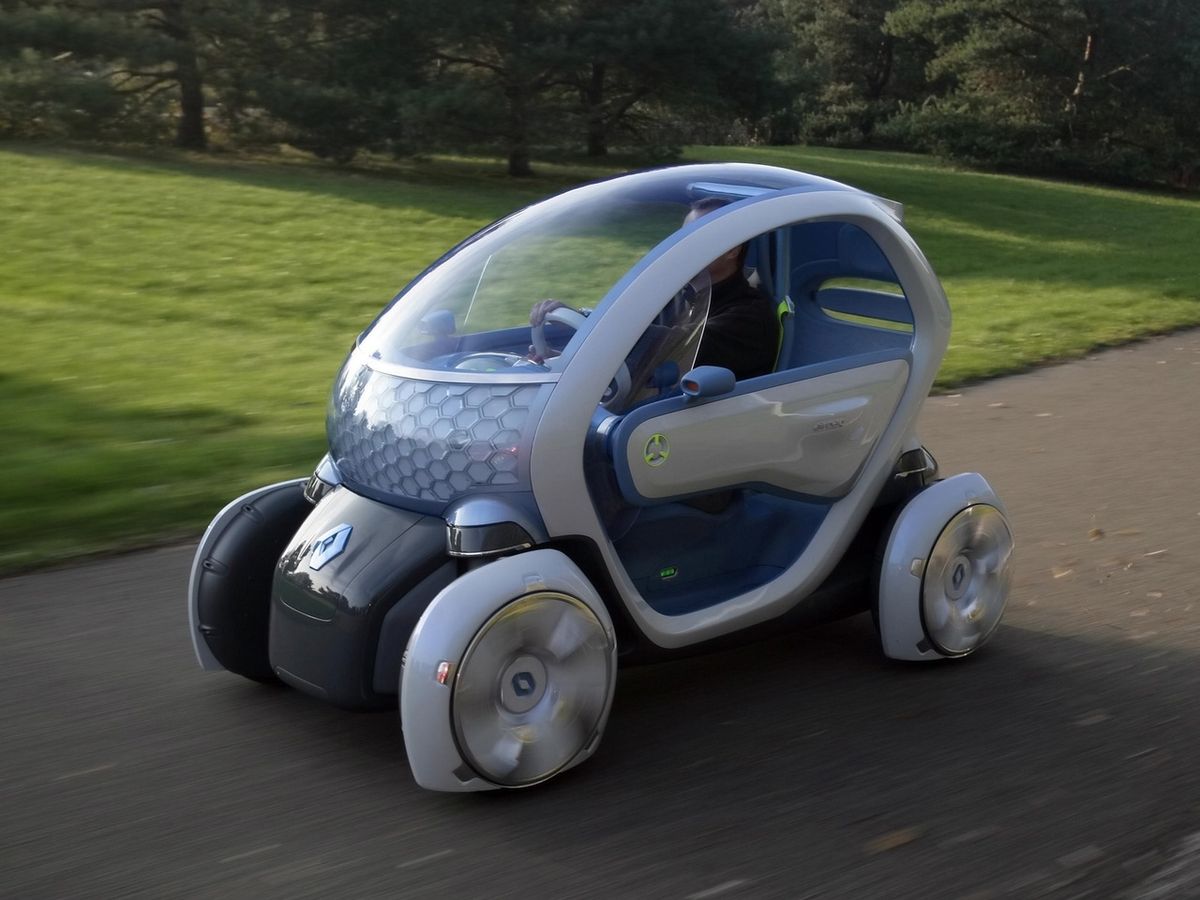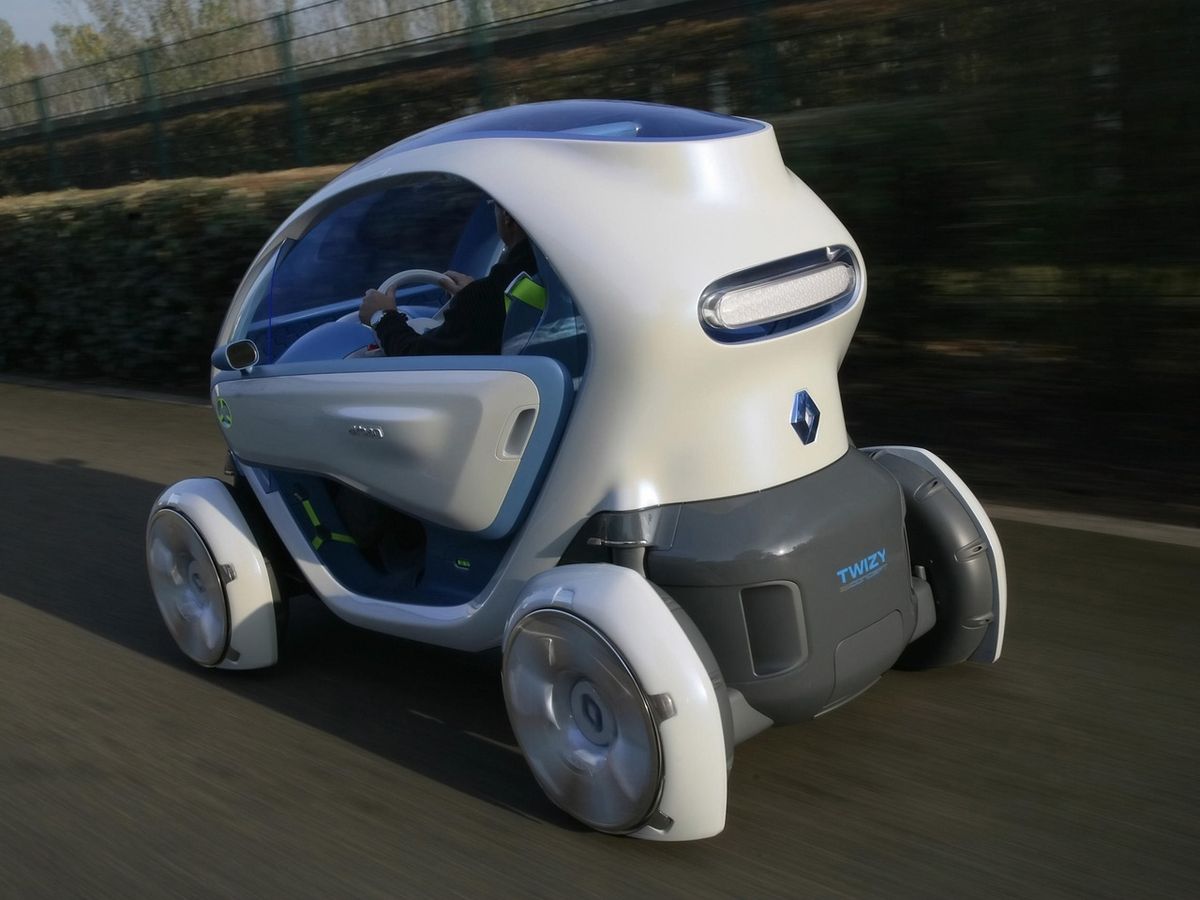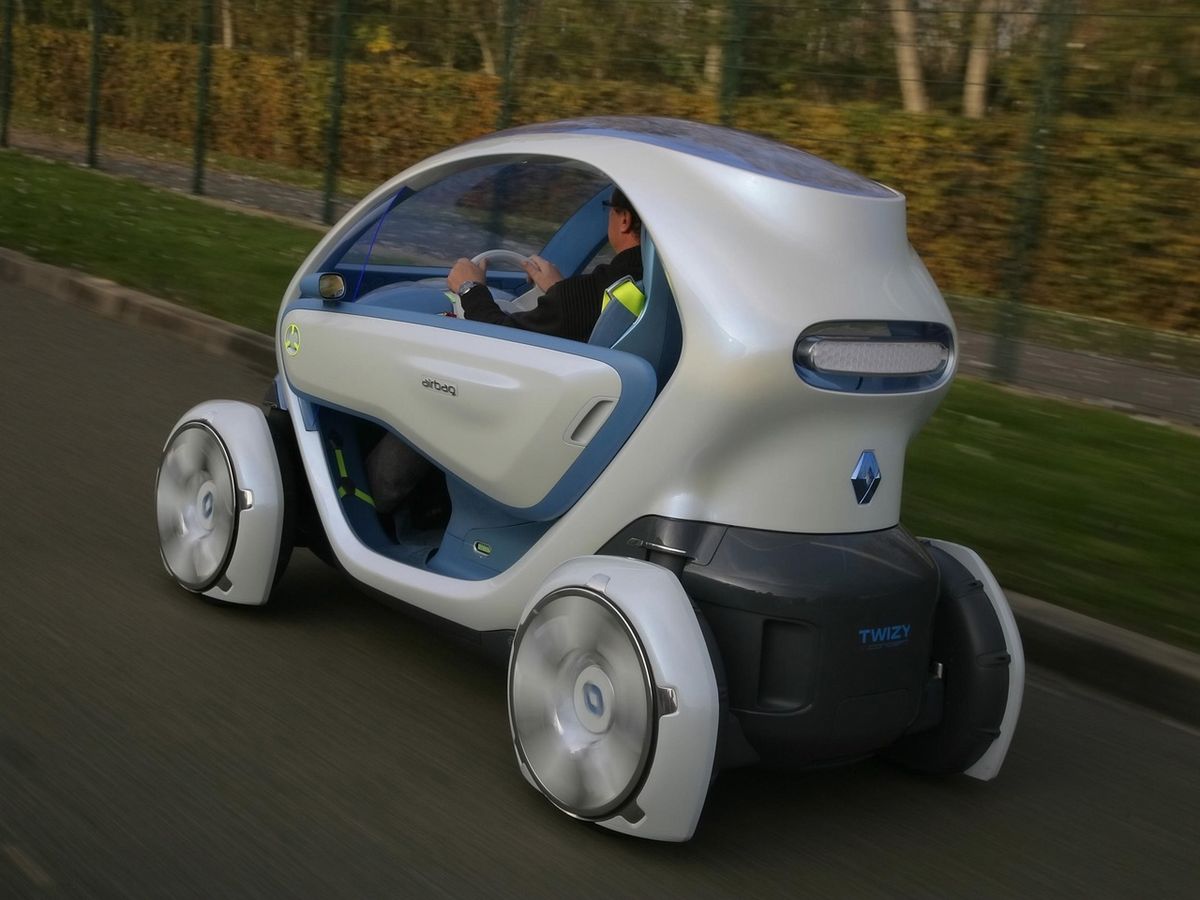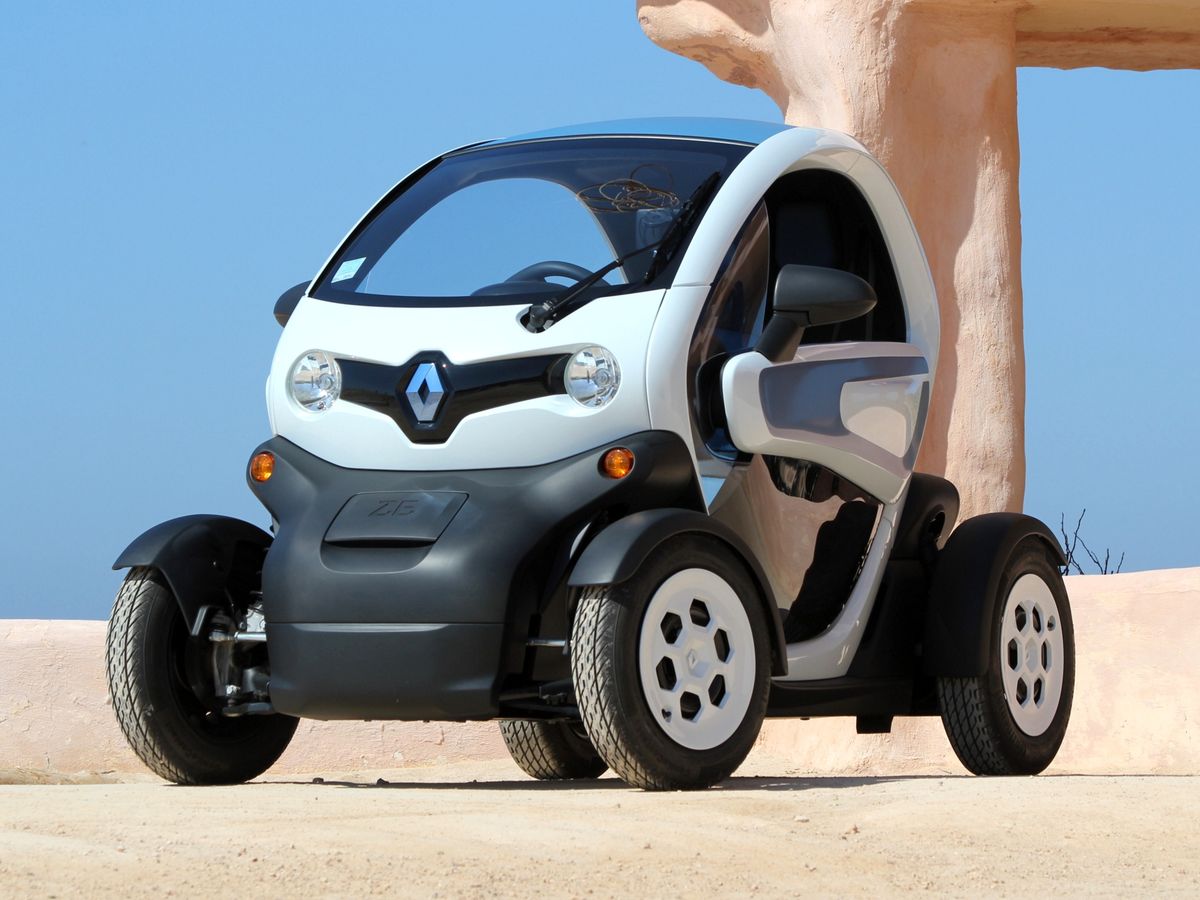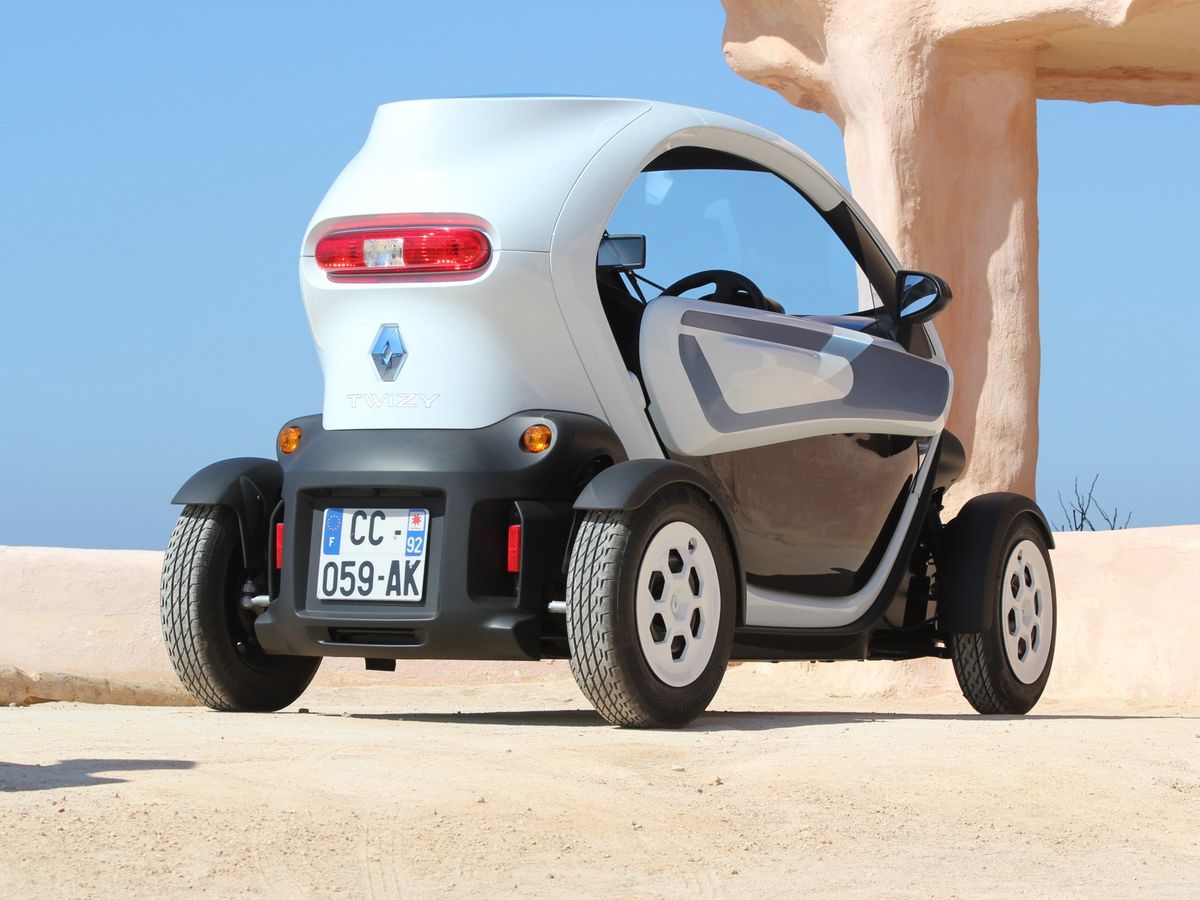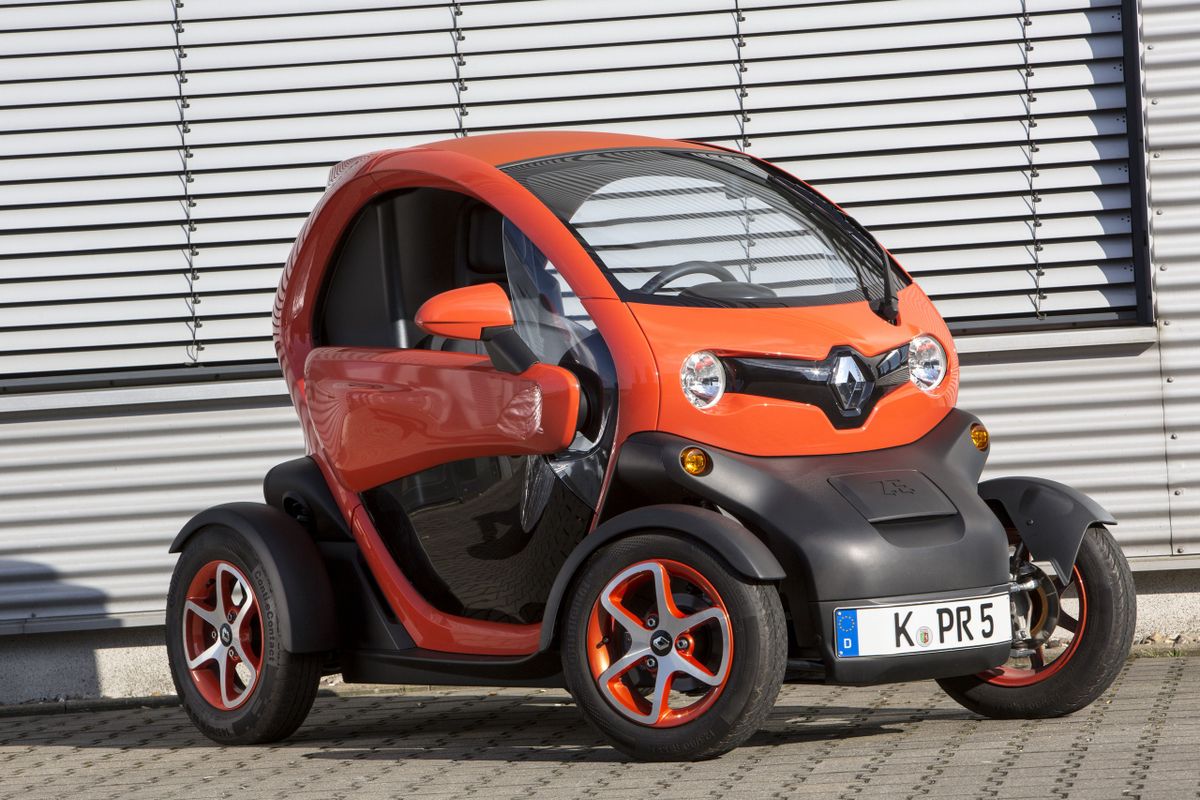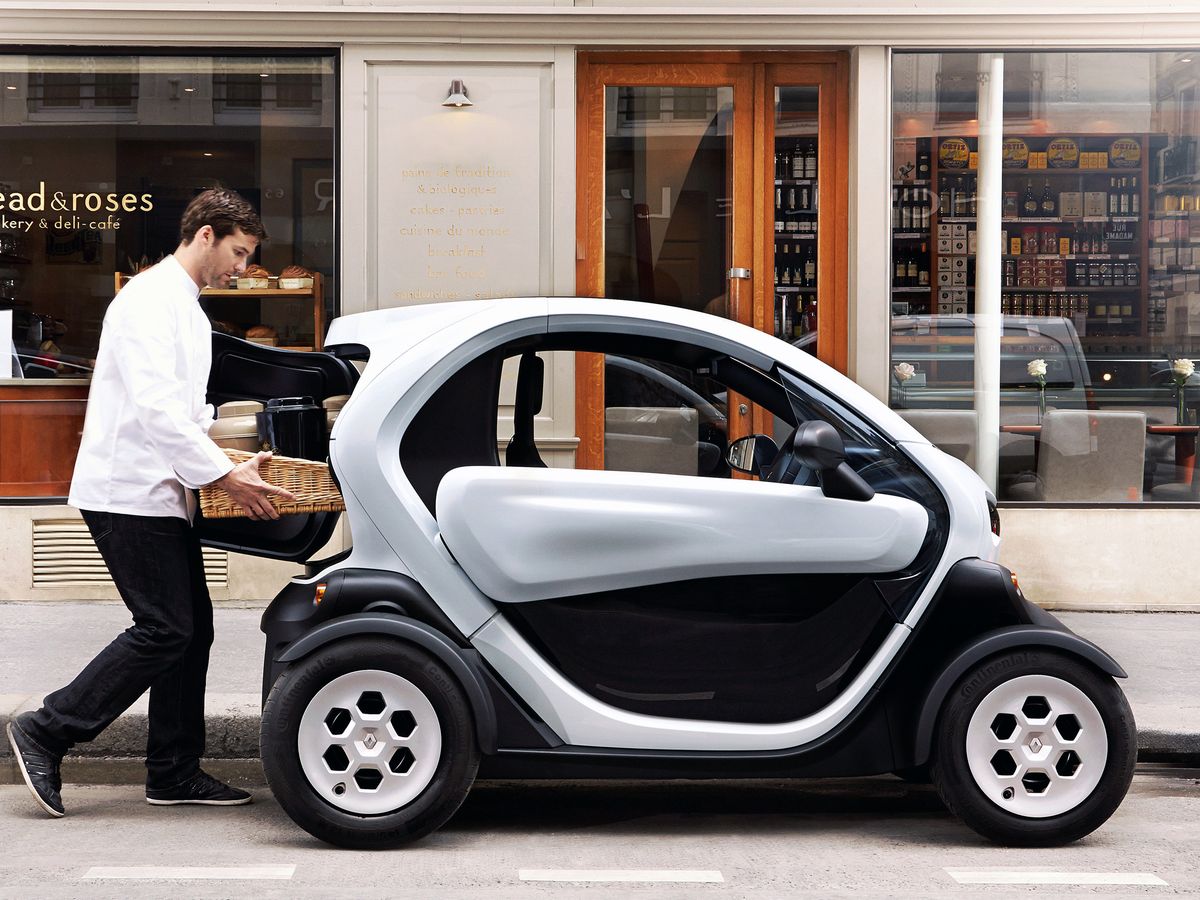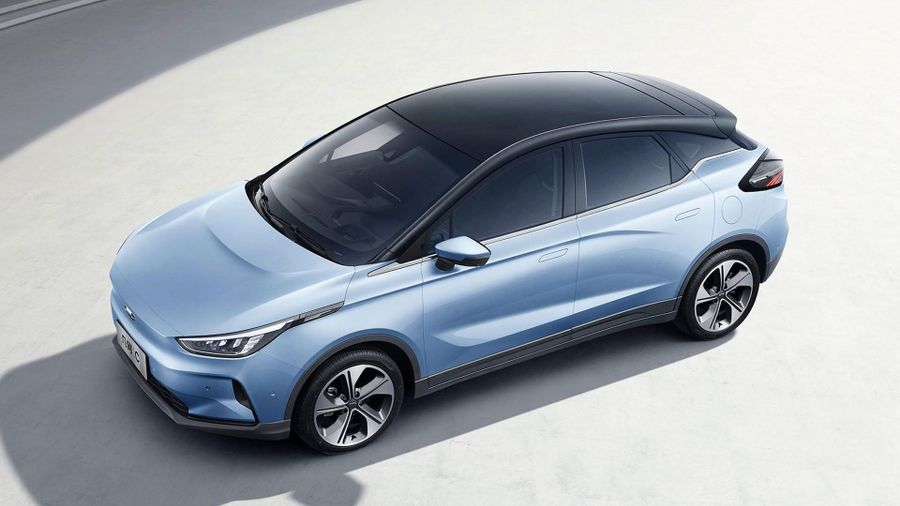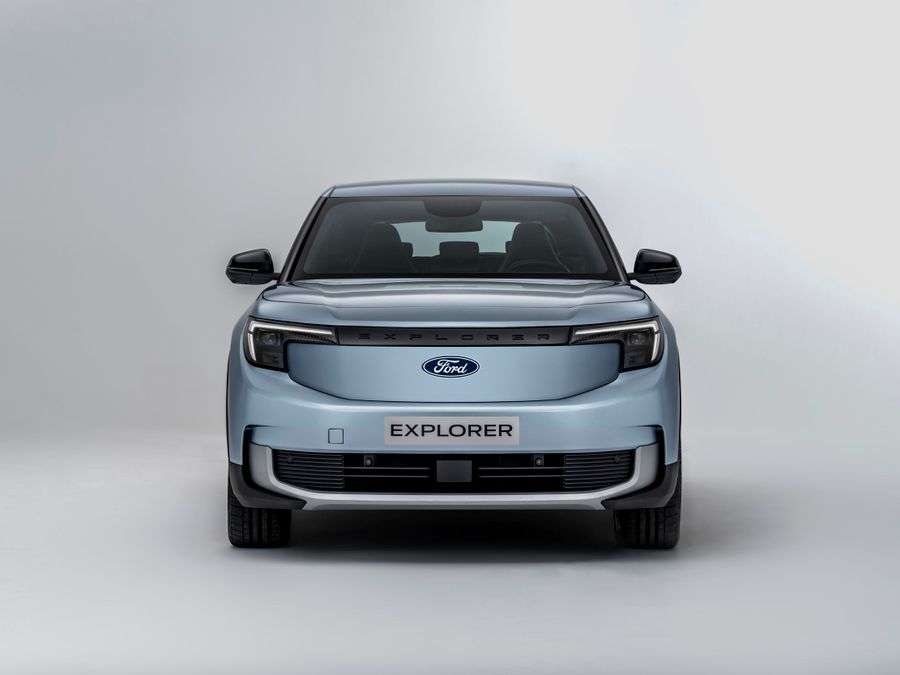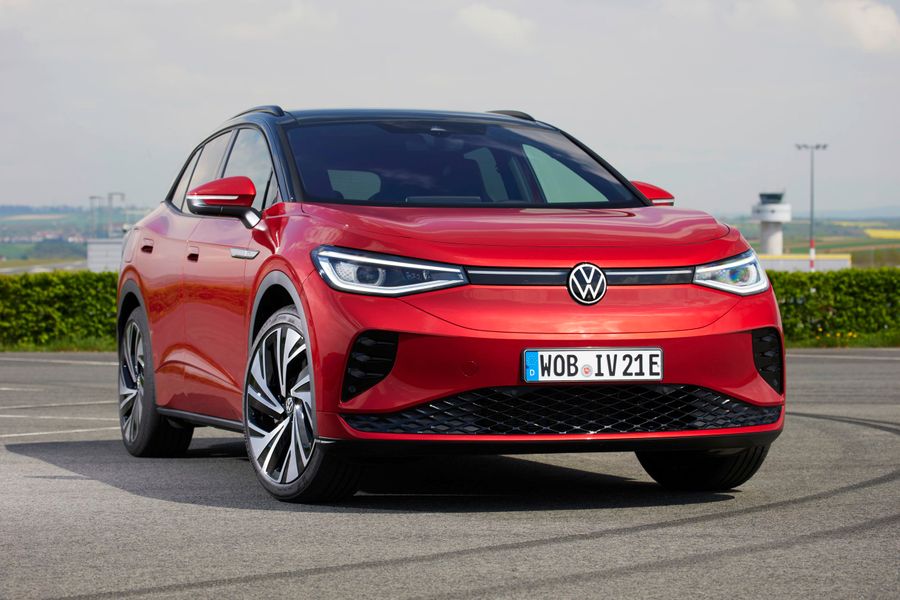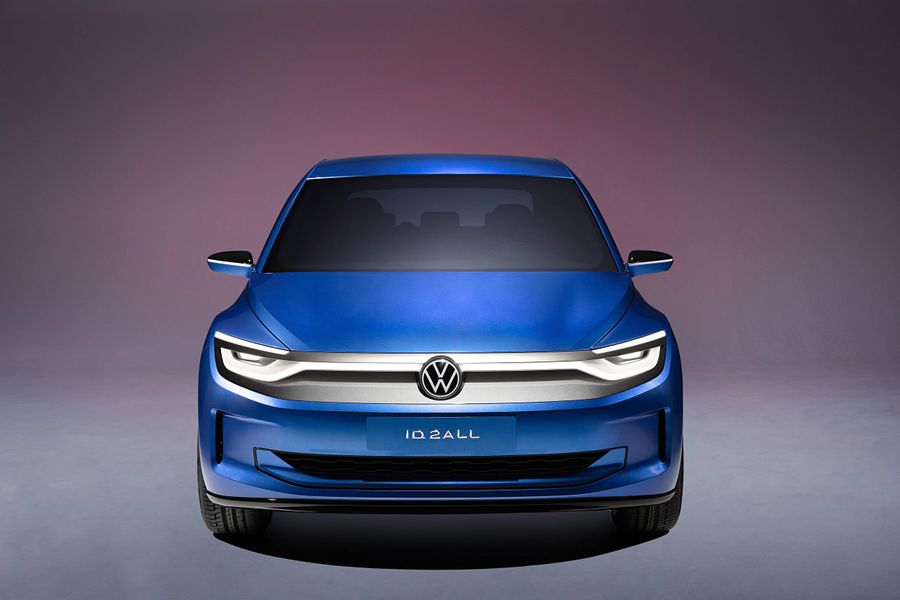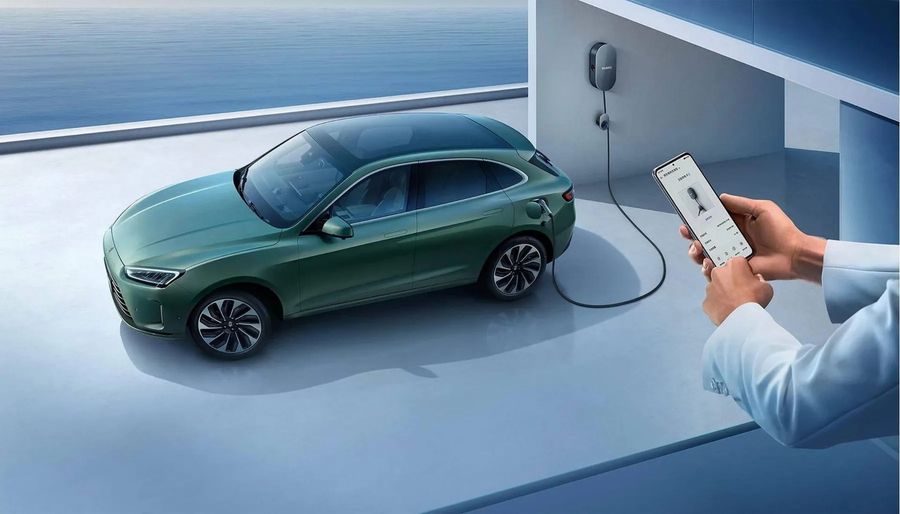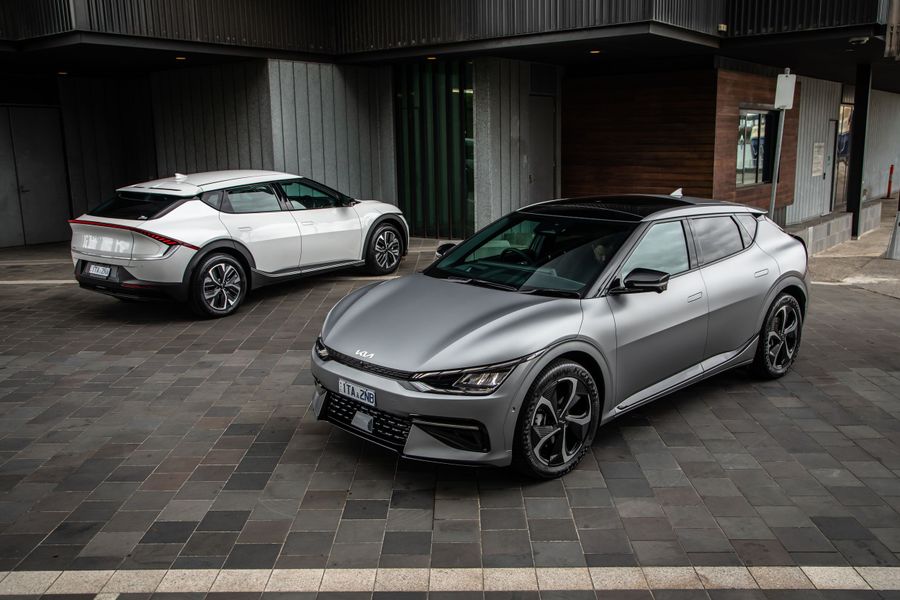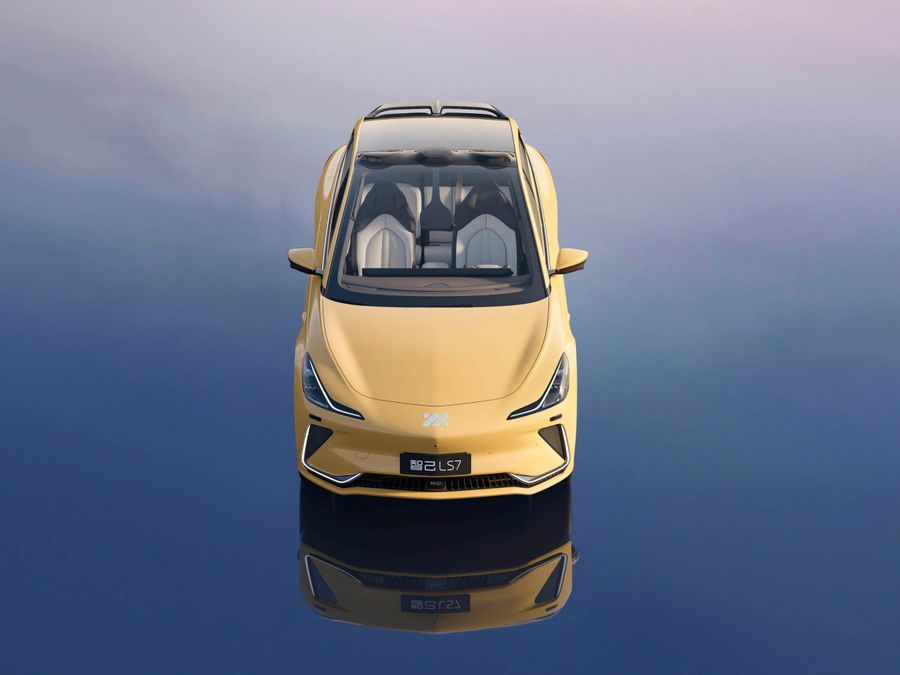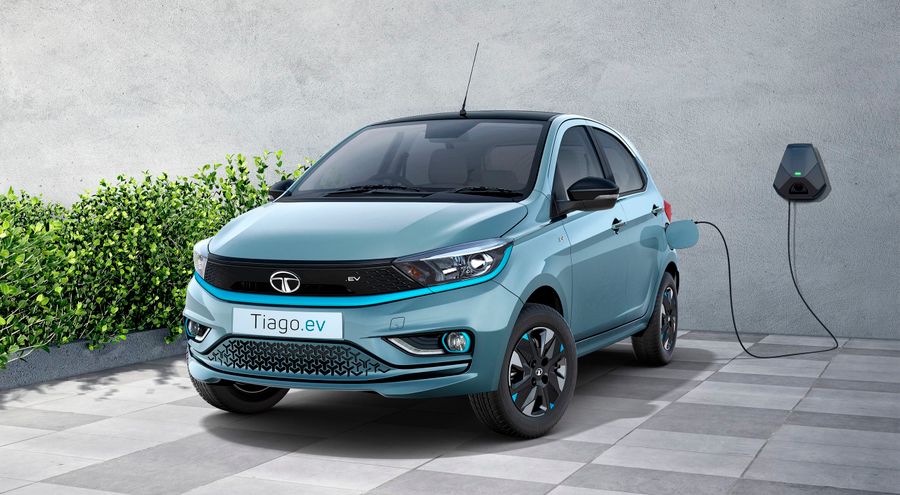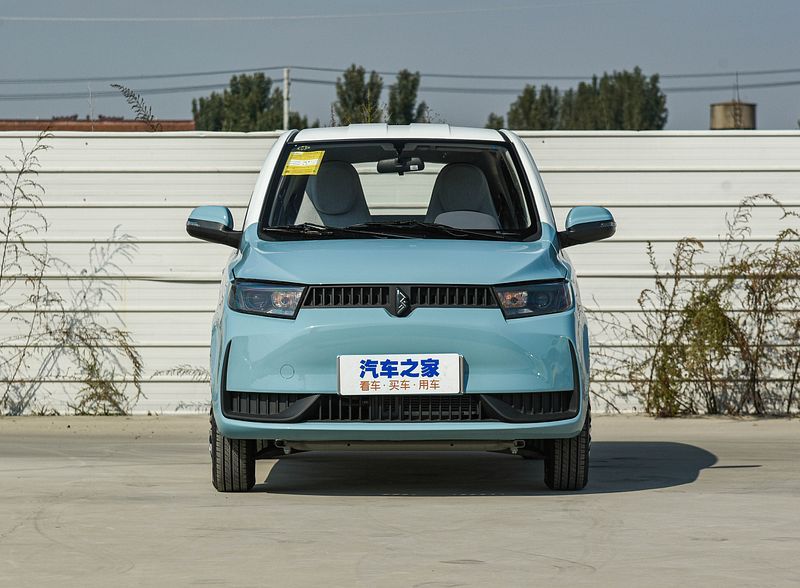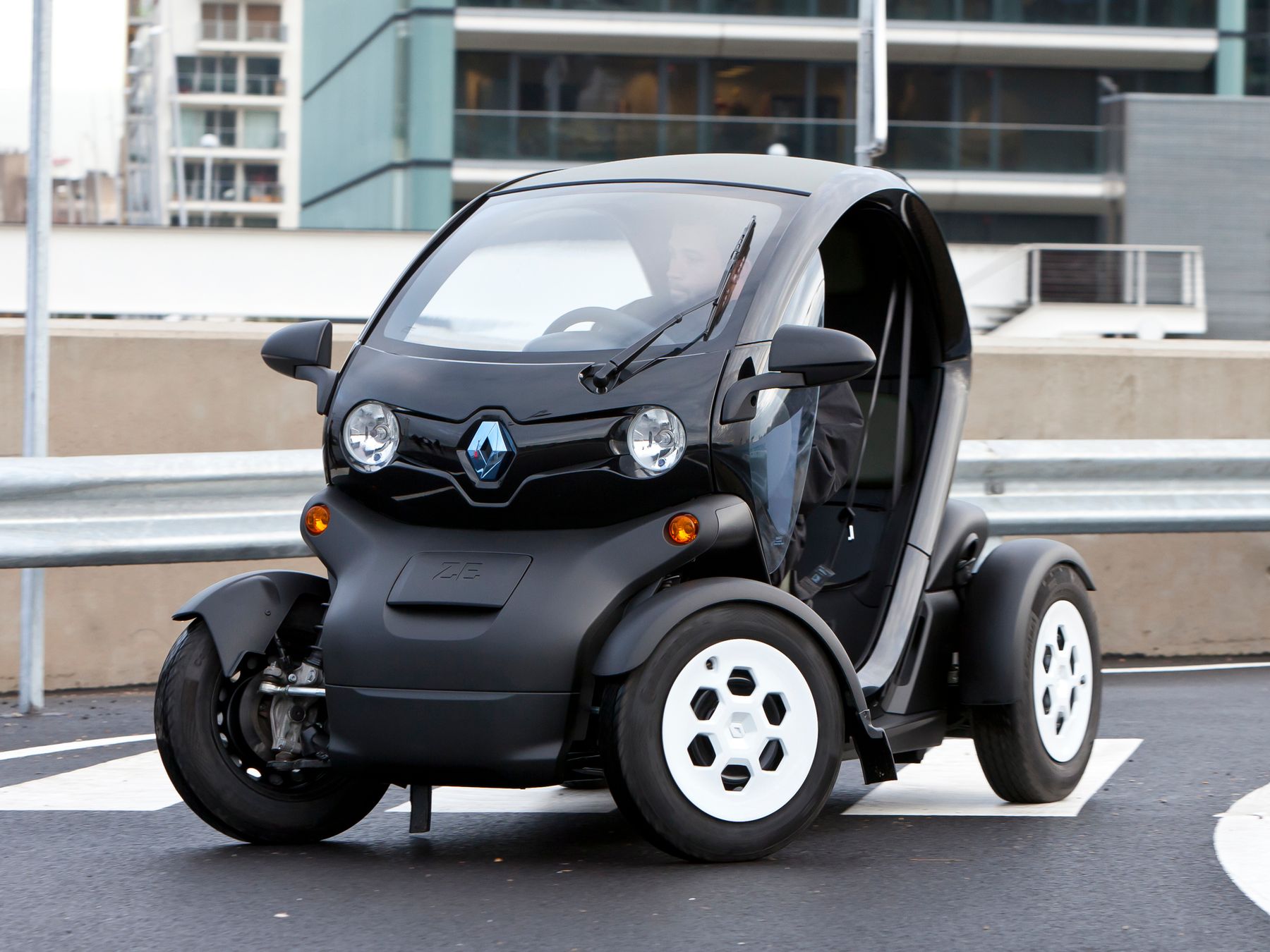
Renault Twizy. Electric baby
The Renault Twizy is a two-seater microcar developed by Renault (France). It is officially classified as a light or heavy quadricycle, depending on the output power, which is either 4 kW (5.4 hp) for the 45 model or 13 kW (17 hp) for the 80 model, both names reflecting its top speed in km/h. The Renault Twizy is sold in Europe and some Asian countries.
The Renault Twizy concept car premiered at the 2009 Frankfurt Motor Show, and its production began in May 2011. A year later the little car entered the French market, and since April 2012 it has appeared in several European countries. The Twizy’s retail price does not include a battery, which is rented for a monthly fee that also includes road assistance and a battery replacement guarantee. The little car became the best-selling electric car in Europe in 2012. In April 2015, 15,000 Twizy vehicles were sold worldwide.
Exterior
The Renault Twizy is an ultra-compact car with a length of 2.32 meters, a width of 1.19 meters and a height of 1.46 meters. It looks like a hatchback with two side doors that open upwards for ease of entry and exit. The vehicle’s frame and body offer occupants extra protection with its deformable structure, while the outboard position of the four wheels and the lateral beams located either side of the chassis provide protection in case of a side impact. In case of cold weather, the Twizy can be equipped with winter tires and flexible side windows to enclose the cabin, as well as electric heating.
The Renault Twizy became the best-selling electric car in Europe in 2012
In addition to the two-seater versions, there is also the dream of couriers and pizza deliverymen, a single-seater version Cargo, which is distinguished by a cargo compartment located behind the driver’s seat with a volume of 200 liters. The Urban and Trend two-seater versions have the useful volume of the trunk of 31 liters, and the seats are arranged in the same way, one after the other.
Powertrain
The Renault Twizy is powered by a 6.1 kWh lithium-ion battery located under the front seat. A more powerful version is capable of driving at a speed of 100 km, but Renault claims that a maximum speed reaches about 80 km/h in real conditions. At high speed, without battery saving, the driving range is about 50 km.
The battery can be charged via a long coiled cable stored under a cover at the front of the car. The built-in charger is compatible with public stations as well as standard 220-240V 10A household power. It takes approximately three and a half hours to charge a fully depleted battery. Safety systems include a driver’s airbag, a four-point seat belt at the front, and a three-point belt at the rear.


